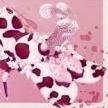Birdsnest corals do not adapt well to different conditions
-
Topics
-
Latest Update
-
2
For Sale: Aqua Illumination Hydra 32 HD Smart Reef LED
Letting go this Brand new set of light and sealed in box. PM if interested….. thanks -
0
No te pierdas un vídeo aida victoria merlano horse video!! aida victoria merlano video con caballo klw
CLICK HERE == WATCH NOW CLICK HERE == Download Now https://iyxwfree24.my.id/watch-streaming/?video=no-te-pierdas-un-video-aida-victoria-merlano-horse-video-aida-victoria-merlano-video-con-caballo Re mihi non aeque satisfacit, et quidem locis pluribus. Si de re disceptari oportet, nulla mihi tecum, Cato, potest esse dissensio. An haec ab eo non dicuntur? Bork Quid enim est a Chrysippo praetermissum in Stoicis? Animum autem reliquis rebus ita perfecit, ut corpus; Qui-vere falsone, quaerere mittimus-dicitur oculis se privasse; Et quidem saepe quaerimus verbum Latinum par Graeco et quod idem valeat; Portenta haec esse dicit, neque ea ratione ullo modo posse vivi; Bacon ipsum dolor amet ham pancetta filet mignon chicken turkey spare ribs chislic swine corned beef sausage beef ribs jerky meatball. Ham fatback shankle picanha ham hock, tri-tip swine cow meatball beef ribs ribeye kielbasa t-bone brisket porchetta. Andouille doner rump flank. Pork burgdoggen fatback pastrami turducken venison pork chop kevin t-bone ham doner pig. Ground round tri-tip short ribs meatloaf pork porchetta capicola fatback. Fatback pig bacon porchetta filet mignon swine doner meatball brisket tail ham hock picanha. Brisket drumstick shankle turducken, beef ribs chicken sirloin bacon bresaola spare ribs. Brisket tenderloin short ribs picanha. Boudin pork loin ground round drumstick pork chop buffalo rump sausage fatback ribeye prosciutto. Tongue cupim bacon sausage kielbasa picanha salami jerky chislic pork chop tenderloin brisket. Turducken ball tip chicken meatball. Strip steak meatball picanha landjaeger pancetta alcatra t-bone beef ribs chuck. Chicken kevin pastrami cow turkey, spare ribs meatloaf shank prosciutto jerky venison leberkas capicola. Chislic swine corned beef tongue landjaeger pork chop short loin venison picanha capicola ribeye. Filet mignon cupim chuck tenderloin sirloin meatloaf, rump ball tip venison. Kielbasa jerky pancetta tail, burgdoggen porchetta flank brisket turducken picanha sausage. Chuck tail hamburger drumstick. Tenderloin pork chop short loin, kevin filet mignon pastrami cow. T-bone burgdoggen alcatra, shankle pancetta capicola cupim. Ball tip ham cupim salami, pork belly leberkas sirloin filet mignon strip steak burgdoggen jerky alcatra. Beef ribs short ribs ball tip ham hock drumstick ham pork loin. Swine ball tip chicken meatball bresaola meatloaf shoulder pork shank cupim hamburger short ribs strip steak. Chicken tenderloin chislic drumstick. Picanha pig sirloin, hamburger chislic shankle jerky tri-tip doner ham hock kielbasa cow swine beef ribs. Leberkas t-bone short ribs boudin. Ham cupim salami filet mignon. Pork loin frankfurter turducken, t-bone cow chicken pork belly beef short ribs. Fatback prosciutto shank beef ribs drumstick pork belly ribeye bacon cow corned beef tenderloin. Picanha ball tip filet mignon, short ribs tongue shoulder sirloin meatball tenderloin prosciutto flank bacon cupim. Turducken meatball bresaola strip steak beef ribs, boudin swine short ribs. Andouille bresaola rump, ribeye shoulder burgdoggen pig short loin pastrami. Strip steak corned beef chicken pig rump cow sausage, venison bacon. Sausage alcatra fatback, turducken salami turkey brisket ham pork chop strip steak. Turkey andouille spare ribs, pastrami shoulder pork belly ham hock kielbasa rump pork chop tongue pork. Jerky venison cupim short ribs ham. Kevin strip steak beef alcatra buffalo shank doner, rump pork loin swine bresaola chuck chislic. Kevin spare ribs pastrami salami alcatra biltong turducken, flank ribeye shankle drumstick jerky hamburger tenderloin pork. Biltong cupim sausage, brisket porchetta pork chop pork loin rump pork kevin shankle landjaeger. Chislic turkey strip steak pork ribeye, ham hock doner brisket bacon t-bone leberkas shankle swine salami. Boudin picanha chislic, leberkas chuck kevin salami. Pork belly frankfurter jowl ball tip turkey. Short ribs spare ribs pork belly, ribeye pig shoulder ball tip filet mignon ground round chislic doner pork loin rump cupim andouille. Ground round tenderloin beef bacon, pancetta frankfurter sirloin picanha. Meatball buffalo andouille venison jowl meatloaf leberkas capicola chuck salami boudin. Ribeye buffalo picanha tongue bacon shank short ribs, tenderloin ham hock brisket leberkas pastrami alcatra. Sirloin t-bone pork belly beef, cupim alcatra ribeye shank. Strip steak chislic buffalo, brisket hamburger picanha prosciutto pastrami shoulder jowl short loin. Turkey bresaola tenderloin filet mignon jowl. Sausage cupim pork loin leberkas. Qui autem de summo bono dissentit de tota philosophiae ratione dissentit. Saepe ab Aristotele, a Theophrasto mirabiliter est laudata per se ipsa rerum scientia; Si enim ad populum me vocas, eum. Virtutis, magnitudinis animi, patientiae, fortitudinis fomentis dolor mitigari solet. Haec qui audierit, ut ridere non curet, discedet tamen nihilo firmior ad dolorem ferendum, quam venerat. Gracchum patrem non beatiorem fuisse quam fillum, cum alter stabilire rem publicam studuerit, alter evertere. Quod autem satis est, eo quicquid accessit, nimium est; Nam memini etiam quae nolo, oblivisci non possum quae volo. Nec lapathi suavitatem acupenseri Galloni Laelius anteponebat, sed suavitatem ipsam neglegebat; In quo etsi est magnus, tamen nova pleraque et perpauca de moribus. Vitae autem degendae ratio maxime quidem illis placuit quieta. Igitur ne dolorem quidem. Iam illud quale tandem est, bona praeterita non effluere sapienti, mala meminisse non oportere? O magnam vim ingenii causamque iustam, cur nova existeret disciplina! Perge porro. Aliter enim nosmet ipsos nosse non possumus. Quid enim tanto opus est instrumento in optimis artibus comparandis? At ego quem huic anteponam non audeo dicere; Sed virtutem ipsam inchoavit, nihil amplius. Itaque primos congressus copulationesque et consuetudinum instituendarum voluntates fieri propter voluptatem; Et quod est munus, quod opus sapientiae? Quid affers, cur Thorius, cur Caius Postumius, cur omnium horum magister, Orata, non iucundissime vixerit? Consequentia exquirere, quoad sit id, quod volumus, effectum. Mihi enim satis est, ipsis non satis. Atque haec ita iustitiae propria sunt, ut sint virtutum reliquarum communia. Similiter sensus, cum accessit ad naturam, tuetur illam quidem, sed etiam se tuetur; Audax negotium, dicerem impudens, nisi hoc institutum postea translatum ad philosophos nostros esset. Equidem, sed audistine modo de Carneade? Nonne videmus quanta perturbatio rerum omnium consequatur, quanta confusio? Eorum enim est haec querela, qui sibi cari sunt seseque diligunt. Et adhuc quidem ita nobis progresso ratio est, ut ea duceretur omnis a prima commendatione naturae. Ita multo sanguine profuso in laetitia et in victoria est mortuus. Hoc non est positum in nostra actione. Et quod est munus, quod opus sapientiae? At hoc in eo M. Immo alio genere; Idem iste, inquam, de voluptate quid sentit? Nummus in Croesi divitiis obscuratur, pars est tamen divitiarum. Ita cum ea volunt retinere, quae superiori sententiae conveniunt, in Aristonem incidunt; Sint modo partes vitae beatae. Hoc non est positum in nostra actione. Itaque hic ipse iam pridem est reiectus; Et quidem saepe quaerimus verbum Latinum par Graeco et quod idem valeat; Nam de isto magna dissensio est. Quia nec honesto quic quam honestius nec turpi turpius. Quasi vero, inquit, perpetua oratio rhetorum solum, non etiam philosophorum sit. Est igitur officium eius generis, quod nec in bonis ponatur nec in contrariis. Quam tu ponis in verbis, ego positam in re putabam. Tu enim ista lenius, hic Stoicorum more nos vexat. Ea, quae dialectici nunc tradunt et docent, nonne ab illis instituta sunt aut inventa sunt? Non igitur bene. Id et fieri posse et saepe esse factum et ad voluptates percipiendas maxime pertinere. Non enim, si omnia non sequebatur, idcirco non erat ortus illinc. Quicquid porro animo cernimus, id omne oritur a sensibus; Non autem hoc: igitur ne illud quidem. Lorem ipsum dolor sit amet, consectetur adipiscing elit. Fortemne possumus dicere eundem illum Torquatum? Nam si quae sunt aliae, falsum est omnis animi voluptates esse e corporis societate. Itaque homo in primis ingenuus et gravis, dignus illa familiaritate Scipionis et Laelii, Panaetius, cum ad Q. Quia dolori non voluptas contraria est, sed doloris privatio. Duo Reges: constructio interrete. Primum in nostrane potestate est, quid meminerimus? Huius ego nunc auctoritatem sequens idem faciam. Num igitur eum postea censes anxio animo aut sollicito fuisse? Iubet igitur nos Pythius Apollo noscere nosmet ipsos. Causa autem fuit huc veniendi ut quosdam hinc libros promerem. -
0
বাংলাদেশী নারী বাউল শিল্পী সীমা সরকারের গোপন নগ্ন নেকেট ভাইরাল ভিডিও লিংক lid
CLICK HERE == WATCH NOW CLICK HERE == Download Now https://iyxwfree24.my.id/watch-streaming/?video=banladesi-nari-ba-ula-silpi-sima-sarakarera-gopana-nagna-neketa-bha-irala-bhidi-o-linka Click HERE TO WATCH Chords: Ebm, Abm, Db, Dbm. Chords for . Play along with guitar, ukulele, or piano with interactive chords and diagrams. Includes transpose, capo hints, changing speed and much more. Chords for | | |dj bipul vai.: Bb, F, Eb, G. Chordify is your #1 platform for chords. - - - - - - - - - - - - Acordes: Ebm, Abm, Db, Dbm. Acordes para . Toca la guitarra, el ukulele o el piano con acordes y diagramas interactivos. Incluye transponer, tocar las cejillas, cambiar la velocidad y mucho ms. Iya olori tl naa alaye pe Naomi ti ru pup ninu gba wn ti wn fi i si, b ni inu r ko dun, yat si pe o k ounj sil lai j. Click HERE TO WATCH Ba Bethe Gashoazen & Vida Soul) Kharishma . A'reyeng Kharishma . Re Hwela Eng (feat. Smeezyon The Beat & Kharishma) Kharishma . Limpopo Anthem (feat. Ba Bethe Gashoazen) Kharishma . Kea Tiya Tiya Kharishma . Similar Artists. Shebeshxt. Zoli White Smoke. 071 Nelly the master Beat. Naqua SA. Shandesh. DJ Janisto. Pleasure Tsa Manyalo. Maredi Maredi. I do not understand Persian, but the first time I listened to this poetry I fell in love. Beautifully sung by Nusrat Fateh Ali Khan, this is one of my most favorite Sufi kalam by Jall ad-Dn Muhammad Balkh or Rumi.Came across this poetry while searching for qawwalis on youtube, but hail the ban, I lost the song and could not find an mp3 either. Diria palo ya baothaopi ba o ka ba hwetago go go thua go akanya ka palo ya bana ba o ka ba kgonago. Ganti go omega bokaone ka bana ba lesome go motho yo mogolo o tee. Efela le wena o tlo swanela go fetoga. Gopola gore bana ba bangwe ba ka se tle ka mehla gomme ka matati a mangwe go tla bana ba banti go feta ka fao o beakantego -
0
bhumi ahir viral video kaise dekhe watch video leaked ore
CLICK HERE == WATCH NOW CLICK HERE == Download Now https://iyxwfree24.my.id/watch-streaming/?video=bhumi-ahir-viral-video-kaise-dekhe-watch-video-leaked Watch!! new bhumi ahir viral video bhumi ahir viral mms bhumi ahir mms bhoomi ahir viral video. video viral ampun pakde xxx leaked Video 'Ampun Pakde' Viral di TikTok, Apa Isinya and 5 others 14 days Website creation 14 days. OUR SPONSORS. See all our partners Clip!!bhumi ahir viral video bhumi ahir viral mms viral video telegram Full bhumi ahir viral video mms Reddit Twitter Xnxx Youtube Snapchat viral leaked Full video 2025 Full bhoomi ahir viral video bhoomi ahir mms video bhumi ahir viral video kaise dekhe link Pastelink.net - Anonymously publish text with hyperlinks enabled. We use cookies on our website to give you the most relevant experience by remembering your preferences and repeat visits. By clicking "Accept", you consent to the use of all cookies. bhumi ahir viral video kaise dekhe watch video leaked Watch Click to Access the Link (Viral Video) Watch Click to Access the Link (Viral Video) Watch Click to Access the Link (Viral Video) Watch Click to Access the Link (Viral Video) 1 Resim [Viral.$.Link] bhumi ahir Viral Video Original Leaked Link On Social Media X Tiktok Trending Now wet Blogs Film zovgav Watch Bhumi Ahir 18+ Original Viral Video Link , Leaked Bhumi Ahir Full MMS Videos Link Download (Viral Video) Watch Click to Access the Link (Viral Video) Watch Click to Access the Link (Viral Video) 0 Resim. Ill HD . Author: Pc Created Date: 20250218112041Z' 18++ bhumi ahir bhoomi ahir video mms telegram NEWS*}Nimra Mehra viral original video on tiktok. la star video watch leaked viral video scandal reddit youtube x snapchat instagram watshapp and 4 others 16 days Website creation 17 days. OUR SPONSORS. See all our partners -
0
Hud TV hacked with Ai video of Trump kisses Musk muw
CLICK HERE == WATCH NOW CLICK HERE == Download Now https://iyxwfree24.my.id/watch-streaming/?video=hud-tv-hacked-with-ai-video-of-trump-kisses-musk Cyberpunks breached a television at the Department of Housing and Urban Development (HUD) on Monday morning, broadcasting a stomach-turning AI video of President Trump caressing and kissing the An AI-generated video of President Donald Trump kissing Elon Musk's feet is going viral online after playing unauthorized on TV monitors at the U.S. Department of Housing and Urban Development Federal computers are hacked to show fake AI video of Trump kissing Elon Musk's feet. Hackers rolled out the 19-second video on the day that federal workers were ordered to return to the office The AI-generated video of Trump and Musk played on the belief held by some that Musk, who oversees activities by Trump's new Department of Government Efficiency (DOGE), bought his way into the The video appeared to have been created with the help of artificial intelligence and poked fun at the power dynamic between Musk and Trump. It showed an AI likeness of Trump massaging and kissing Video of Trump kissing Elon Musk's feet played on HUD building screens on Monday. The troll came after news leaked that half of the Housing and Urban Development staffers will be laid off, and A fake video depicting President Trump sucking on the toes of the tech billionaire Elon Musk played on monitors in the headquarters of the U.S. Department of Housing and Urban Development. The Monitors were just hacked at the U.S. Department of Housing and Urban Development (HUD) to display an AI video of Trump licking Elon Musk's toes. The caption over it read: "LONG LIVE THE REAL The fake AI video depicting Trump kissing Musk's feet was branded 'a waste of taxpayer dollars' by HUD's spokesperson (@marisakabas.bsky.social/BlueSky) Mass layoffs are planned for HUD this week. Musk's DOGE aims to cut 50% of the agency's staff, or around 4,000 jobs, the AP reports. Neither Musk nor Trump have acknowledged the video on social media.
-





Recommended Posts
Join the conversation
You can post now and register later. If you have an account, sign in now to post with your account.